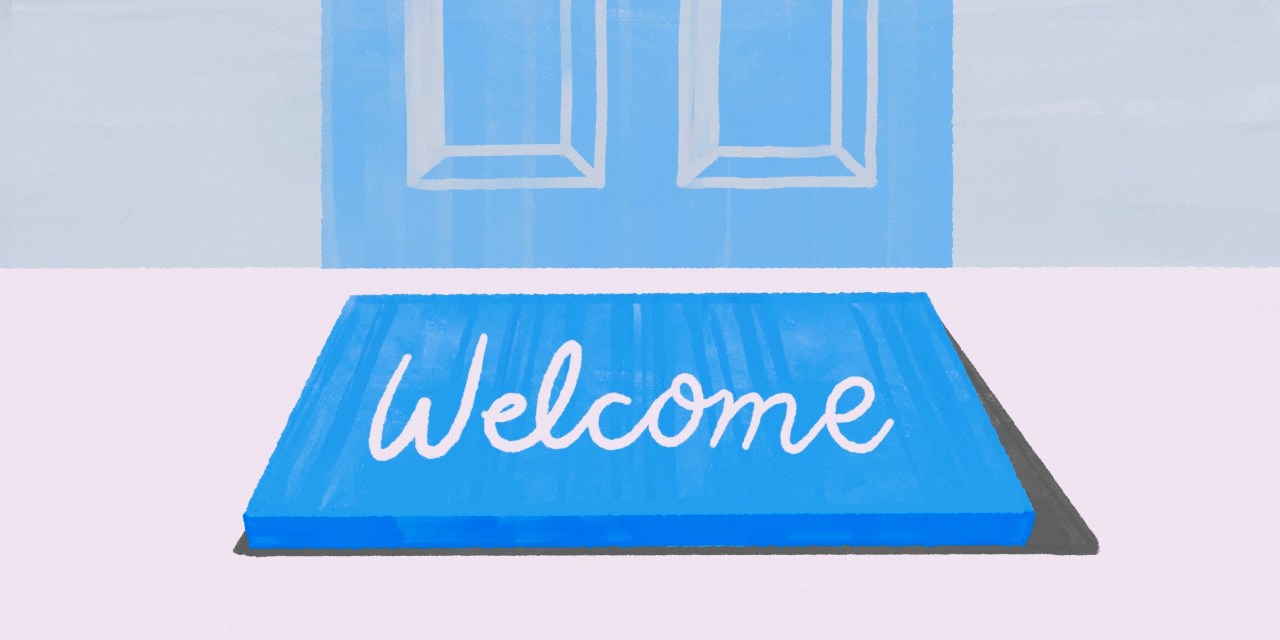Why hospitality design will dominate office spaces in 2023

Office space has evolved more than we could have imagined in the past year.
Leaders continue to grapple with how they can attract people into the office, at a time when remote working has been normalized. For some, that’s led to the incorporation of biophilic features like more plants and natural earth tones, to help make people feel good while they’re in the office, activity-based working layouts where no one is assigned to a specific desk, making sure the lighting is just right to boost productivity and so much more.
So what’s in store for 2023? Workplace design experts say that workplaces are starting to revolve around a human-centered design that mirrors what we’d typically expect from the hospitality sector, rather than traditional office environments. That means more emphasis is going on how to make entrances inviting, welcoming and entertaining for visitors and staff alike. And improving employee experience is at the heart of design strategies.
“It’s asking what’s the solution to hybrid work and bringing people back [to the office],” said Jeffrey Sharpe, principal director and global lead at design company frog. “It has put a spotlight on the employee experience at the center of everything to really understand the needs and aspirations of employees. We’ve looked at the last couple of years as an enormous opportunity for organizations to finally create the work environments they should have had in the first place,” he added.
Hospitality design inches into the office
Spectorgroup, an architecture, interior design, and master planning firm headquartered in Manhattan, has gone all in on creating a strong hospitality vibe for its New York City office. “Our reception area has been swapped out with a welcome zone,” said Scott Spector, principal of Spectorgroup. “The receptionist is gone from the forefront.”
Instead of the reception, visitors and staff walk through a lounge-type area with rows of free food and beverages and different types of comfortable seating – similar to what you would see in a hotel lobby or upscale airport lounge. In December, the company used the area to host its holiday part, and it has also been used for panel discussions and is a perfect area for client meetings, according to Spector. “It needs to be designed cleanly because it’s still our front door,” he added.
Hospitality will be the word on the top of all workplace designers tongues in 2023, design experts predict.
“Typically when you walk into an office, there is a receptionist or security point where you check in,” said Samantha Lewis, associate and interior designer at architectural firm Gensler. “That process in the past has really been sterile, like showing your badge and getting in the elevator.”
Lewis predicts that with the reception area turning more into a welcome zone, receptionists will take on the duty of ensuring that food and drink is set up, all the technology is working, and the space is ready for workers and visitors.
“That’s what’s going to elevate your experience at the workplace versus at home,” said Lewis. “It has to be better than what’s at home, in all aspects including technology, design and service.”
This hospitality feeling will go beyond just the entrance. It’s seeping into the entire office. There will always be basics like phone booths, huddle areas, private offices and a section with an open floor plan, but more attention will be paid to how to incorporate comfort into the working environment, with people given a range of choices in workspaces, that can suit how they prefer to work.
“Those types of spaces promote and support social interaction, whether at a large group scale or one-on-one serendipity of running into each other,” said frog’s Sharpe.
Meanwhile Spector also predicts that a focus on outdoor space will be included as a part of the puzzle heading into 2023. That might look like adding amenities outside, even if it’s just a terrace. “Any landlord that has something viable for outside, they are developing it,” said Spector.
Hybrid work and its relationship with the office
Many people believe that what the office offers will be the largest magnet to get people back in person. However, in 2023 leaders will continue to see office spaces empty some days and full the next, especially if they are operating on a schedule that requires certain days in-person.
“It puts a very sharp light on what is the purpose of the office and what is the shape of those offices,” said Sharpe. “In those cases, we certainly don’t need the same amount of area and square footage in the space.”
When someone does go into the office and it feels big and empty, that most likely isn’t going to encourage them to return. Plus, on the financial side, companies will question why they’re paying maximum rent for underused space. At the same time, office leases are long and in another five or so years, a company might need all that space again if more people are going back.
Spector is working with one client who is nervous that their office will feel empty.
“How do you fill in those open spaces comfortably in the beginning so you don’t feel that it’s a huge open space?,” said Spector. The answer is staging those spaces for the early phases of returning to work, which might include additional collaborative seating, a gaming element and so on. As more people return to the office down the line, these spaces might be redesigned to maximize workflow.
An opportunity to showcase a company’s core values
Sharpe admits that workplace design has a base formula that can be largely replicated from one company to the next. But there is always room for customization on top, to ensure a company’s unique needs are met. For instance, how a company’s values and branding are reflected in the space as well as how it wants the environment to enhance employee experience. Some companies may put more emphasis on sustainability for example, and so incorporate more biophilic features than another company.
Norwegian petroleum company Equinor asked design firm frog to help it shape its former offices into modern workspaces. “Much of it was really understanding their culture and rituals that are very much about who they are and celebrating those, but also using those to unlock different ways of collaborating and working together,” said Sharpe, who believes more and more companies will ask similar questions in 2023. Equinor hadn’t traditionally had shared working spaces in its offices, but has now incorporated this as a design feature to help boost creativity.
Sharpe says that means companies are focusing more on creating the space needed to provoke and support the type of work that employees need to do. That might be autonomous or collaborative work or a mix. That’s led to a rise in activity-based working layouts where people can pick where they want to sit depending on the kind of work they need to do that day.
“The office is not just a vessel to hold people,” said Sharpe. “It’s a tool to activate new behaviors and interactions.”


